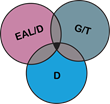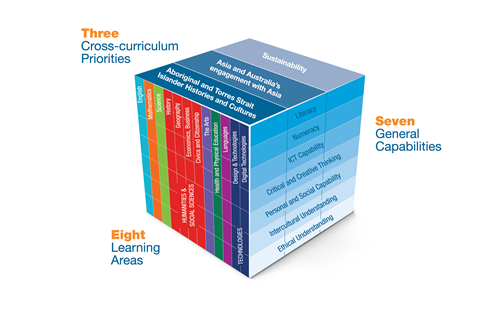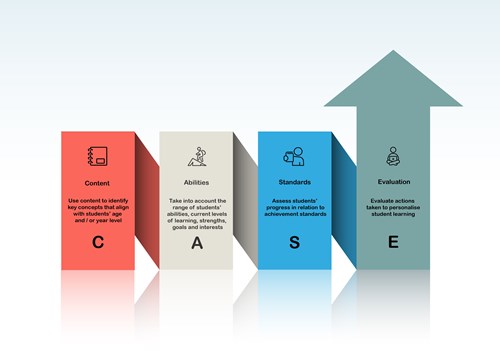
Students in Australian schools represent diverse learning needs. It has been estimated that 25 per cent of Australian students have English as a second or additional language or dialect (EAL/D) including Aboriginal students who have Aboriginal English as a first language, 19 per cent receive adjustments (Education Council) and 10 per cent are identified as gifted and talented (Gagne). These are not homogeneous groups of students, and some students have characteristics across one or more of these elements.
The functional needs of students may require adjustment to one or more of the following areas:
- teaching and learning – curriculum and pedagogy to provide opportunities for each student to engage in age-appropriate learning
- communication – pedagogy and technology to support the way each student receives, processes, and communicates their learning
- personal care, health and safety – concepts and content covered through the general capabilities and/or Health and Physical Education, Science, Technologies and other learning areas
- access – the learning environment to optimise student participation and engagement with all aspects of the learning process.
The diversity of students’ capacity to engage with the curriculum may be influenced by one or more of the following:
- social, emotional and physical development
- level of health and wellbeing
- age
- level of need
- appropriate supports and adjustments
- previous schooling and/or absenteeism
- learning environment
- collaboration among the student, family and school
- differences between home and school priorities and practices.
All students have unique talents, abilities and capacity to learn. Schools cater for the diversity of students in different ways. The three dimensions of the Australian Curriculum support teachers as they plan educational programs, with advice on meeting the needs of all learners.
These pages include specific advice and resources based on the three dimensions of the curriculum including:
- a series of steps to show how using the Australian Curriculum content and standards can meet the learning needs, interests, and abilities of all students, the CASE steps (Content, Abilities, Standards and Evaluation) and
- illustrations of professional practice.
When planning student-centred learning, teachers may focus on one or more of the three dimensions of the Australian Curriculum. However, it is expected that learning area content will be the starting point for planning.

